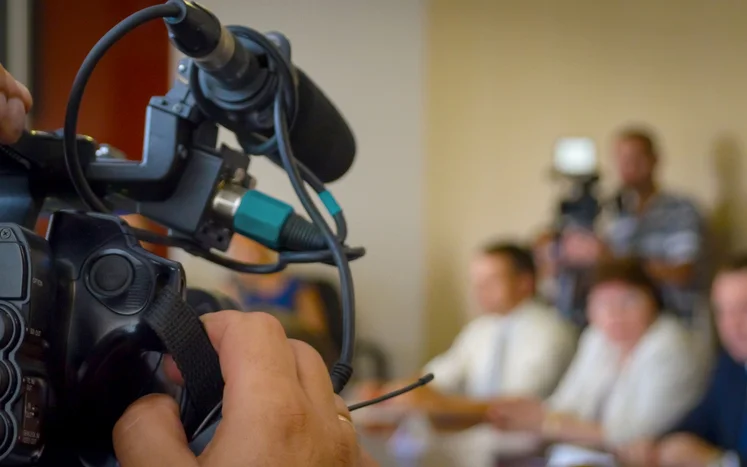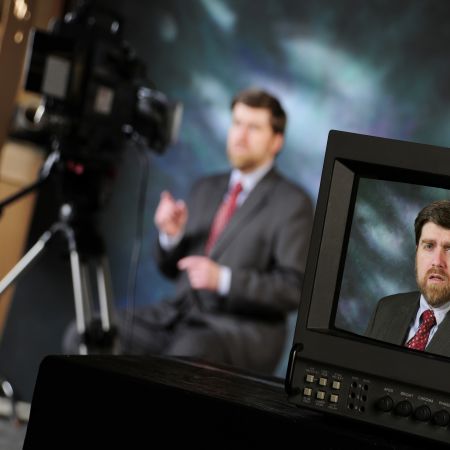The Ultimate Overview to Legal Videography for Attorneys and Legal Teams
The Ultimate Overview to Legal Videography for Attorneys and Legal Teams
Blog Article
Diving Into the Mechanisms of Legal Videography: Introduction Its Operation in Shielding Genuine Aesthetic Testament for Judicial Procedures
In the world of judicial procedures, the function of legal videography stands as a foundation in protecting and presenting visual evidence. As technology remains to advance, the devices behind legal videography have actually come to be progressively elaborate, offering a critical layer of credibility to testaments caught on video. By delving into the functional details of legal videography, one can reveal the precise processes that safeguard the honesty of aesthetic proof presented in courtrooms - Legal Videography. This expedition not only clarifies the historic advancement of lawful videography however also means the future patterns that may additionally transform how visual testaments are maintained in the world of justice.
Historic Advancement of Legal Videography
Examining the historical development of lawful videography exposes a substantial makeover in the catching and presentation of visual proof within the legal landscape. In the past, legal proceedings heavily depended on created photographs and transcripts to record events and provide evidence. With the development of video clip technology, the legal industry saw a standard change in just how aesthetic testimony was recorded and provided.
The advancement of lawful videography can be mapped back to the late 20th century when advancements in video recording equipment made it extra easily accessible for use in court rooms. This technical innovation not only enhanced the precision and reliability of visual proof but additionally transformed the means instances were presented to juries and judges (Legal Videography). Attorneys began to recognize the convincing power of video clip recordings in sharing feelings, nuances, and non-verbal hints that created photographs or records alone could not capture properly

Technology Innovations in Video Documents
What key technological advancements have changed video documents in the legal area? The legal area has actually seen considerable improvements in video clip paperwork innovation that have improved the authenticity and reliability of visual proof in judicial process. Among the crucial improvements is high-definition (HD) video clip recording capabilities, which offer crystal-clear images and sharp information that are essential for precisely capturing testaments, faces, and other aesthetic hints. Additionally, the assimilation of timestamping and metadata functions in video paperwork tools has actually allowed accurate documentation of when and where the video was videotaped, making certain the stability of the proof presented in court.
In addition, developments in video security and watermarking innovations have actually bolstered the security and tamper-proof nature of video evidence, protecting it versus unauthorized alterations or tampering. In addition, the development of cloud storage space solutions and remote accessibility capabilities has structured the storage, access, and sharing of video evidence, helping with seamless partnership among attorneys and making certain efficient access to important aesthetic statements when required. These technological advancements in video documentation have undoubtedly revolutionized the legal field, boosting the accuracy, reputation, and admissibility of aesthetic evidence in judicial process.
Duty of Lawful Videographers in Courtroom Setups
The evolution of video clip paperwork innovation in the legal area has actually required an important role for lawful videographers in courtroom settings, making certain the honesty and dependability of aesthetic testimonies presented throughout judicial procedures. Lawful videographers play an essential duty in catching and preserving exact visual proof that can be essential in litigation. Their obligation includes setting up tools, taping proceedings, and generating top quality video clips that precisely reflect the events in the court room.
In addition, lawful videographers often function carefully with lawful groups to ensure that the video clip evidence aligns with the case's demands and can be successfully presented in court to sustain the lawful debates being made. On the whole, the duty of lawful videographers visite site in courtroom setups is crucial in upholding the principles of justice and ensuring the transparency of legal proceedings. Legal Videography.

Ensuring Admissibility and Stability of Video Clip Evidence
To maintain the integrity of aesthetic evidence offered in legal procedures, making certain the admissibility and integrity of video clip proof is a critical duty for legal videographers. Admissibility refers to the acceptance of proof by the court, and for video clip proof to be permissible, it needs to fulfill certain requirements. Legal videographers play a critical role in making sure that the video clips they record follow the guidelines of evidence, such as official site integrity, relevance, and authenticity.
Integrity of video clip proof involves maintaining the creativity and precision of the video from the time it is taped till it exists in court. This consists of safely storing the video documents, recording the chain of custodianship, and protecting against any type of tampering or alterations. Legal videographers have to follow stringent protocols to guarantee the honesty of the video clip evidence and avoid any obstacles to its credibility.
Future Trends in Legal Videography
Offered the boosting reliance on modern technology in lawful procedures, legal videographers are positioned to accept ingenious innovations shaping the future of visual testimony capture and discussion. Among the famous patterns coming up is the assimilation of virtual reality (VIRTUAL REALITY) and increased truth (AR) technologies right into legal videography. These innovations have the potential to change how visual evidence is presented in courtrooms, allowing courts and juries to submerse themselves in the scene of the crime or case.
Furthermore, the usage of expert system (AI) formulas for video analysis is anticipated to enhance the procedure of examining and assessing big quantities of video footage. AI can help in recognizing essential minutes, abnormalities, and patterns within videos, boosting the efficiency of legal examinations.

Final Thought
In final thought, legal videography has actually played a critical duty in offering genuine visual proof for judicial process. With technical developments and the competence of lawful videographers, the integrity and admissibility of video proof are guaranteed in court settings. As legal videography remains browse around this web-site to progress, it will certainly be necessary to copyright requirements that keep the precision and dependability of visual statement for the future of lawful process.
Taking a look at the historic development of lawful videography exposes a considerable transformation in the catching and discussion of visual evidence within the legal landscape.The development of video clip documents modern technology in the legal field has actually demanded an essential duty for legal videographers in court room setups, making certain the integrity and integrity of visual testaments offered during judicial proceedings. Additionally, lawful videographers usually function closely with legal groups to make sure that the video clip proof lines up with the situation's demands and can be effectively provided in court to sustain the lawful debates being made.To keep the credibility of visual evidence presented in legal proceedings, ensuring the admissibility and integrity of video evidence is a critical duty for lawful videographers. As legal videography continues to develop, it will be important to promote requirements that maintain the accuracy and dependability of visual testimony for the future of legal procedures.
Report this page